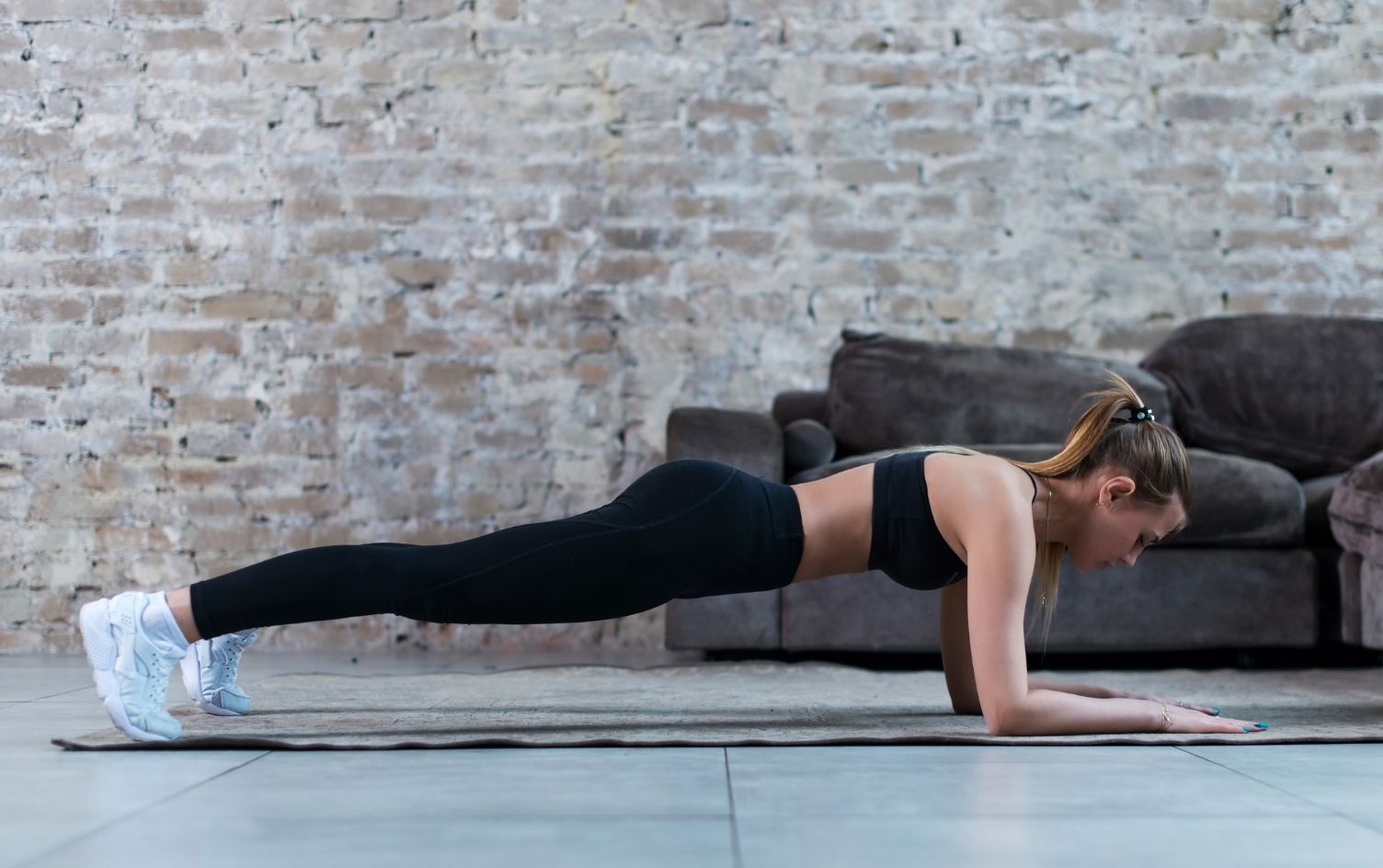The plank is, hands down, the best core exercise. When done correctly, the plank develops core strength, stability and endurance by resisting rotation, flexion and extension at the spine.
When it comes to the plank, practice makes perfect. Actually … scratch that — perfect practice makes perfect. There are many common faults that can turn the “king of core training” into a villain in no time. Avoid these frequent mistakes to get the most out of this highly valuable exercise.
SAGGING HIPS AND OTHER LOSSES OF ALIGNMENT
THE PROBLEM:
Without a doubt, the most common plank fault is letting your hips sag downward, otherwise known as spinal extension. This detrimental droop can lead to back pain or, more seriously, herniated disks. Other losses of alignment include the “chicken-pecking” head (where your chin juts forward), shoulders shrugging toward your ears, hips too high in the air or your body tilting to one side or another.
THE SOLUTION:
First and foremost, ensure you have the strength to hold a strong plank. If lack of strength is an issue, try reducing the load by placing your knees on the ground or elevating your upper body onto a bench, step or TRX suspension trainer. Next, try holding a plank next to a mirror and look for neutral alignment: your ears, shoulders, hips and ankles should all be in a perfect line. If you are still unsure about your alignment, check out this fun Perfect Plank app that watches key points in your body and coaches you into a perfectly aligned plank.
NOT BRACING TIGHT ENOUGH
THE PROBLEM:
When holding a plank, your brain is probably thinking “how long,” instead of “how tight.” A lack of full-body tension can lead to “hanging out” in the joints, which is not only counterproductive but can also leave you at a higher risk for spine and shoulder injury.
THE SOLUTION:
As you get set into your plank, think of tightening each muscle group one-by-one: calves, quads, hamstrings, glutes, core, shoulders and, finally, your forearms. Other tricks to this full-body stiffness include pressing your heels back and driving your forearms downward and apart. These two actions not only help add tension, but can also improve full-body alignment.
SCAPULAR WINGING
THE PROBLEM:
Riding the coattails of number 2 on this list is the setback of “scapular winging” or, more simply, letting your shoulder blades and chest collapse downward into the plank.
THE SOLUTION:
This mistake is another result of “hanging out in the joints,” so you need to be more active in your shoulders. To do so, imagine juicing an orange in each armpit while simultaneously pressing your forearms or hands into the floor.
If you’re holding a hand plank position (instead of a forearm plank), pretend you are corkscrewing your hands away from one another, allowing your elbow pits to rotate forward.
CLICK TO TWEET THIS ARTICLE > Do you know how to hold a plank correctly? Are you sure? Find out on the @myfitnesspal blog. #myfitnesspal
HOLDING THE PLANK TOO LONG
THE PROBLEM:
This mistake ties together all the above issues. When you hold a plank too long, your hips tend to sag, body tension is reduced, and your shoulder blades might begin to wing.
THE SOLUTION:
Once again, throw away the mantra of “how long” and focus on “how tight.” Think of a plank like lifting weights in the gym. You gain so much more from a set of 10 reps with heavier weights (with great form, of course) than a set of 100 reps with a very light weight. The same goes for planking.
In fact, Dr. Stuart McGill, a leader in the field of spinal stability and core strength, touts holding planks for no longer than 10 seconds at a time. If you feel you can do more, hold the plank for 10 seconds, take a 2–3 second reset, then press back up and repeat. These shorter, stronger planks lead to safer planking and greater core strength and endurance gains.
THE BOTTOM LINE
The plank is a highly effective exercise to include in your regular resistance training routine, but only if you’re performing it correctly. Once you’ve perfected your form and are ready to graduate to the next level, try this Essential Plank Workout or even this 4-Week Core Challenge that includes different plank varieties and other vital core exercises.
Ready to take the next step? Unlock MyFitnessPal Premium to access custom goal settings, quick-log recipes, and guided plans from a registered dietitian. Premium users are 65% more likely to reach their weight loss goals!




